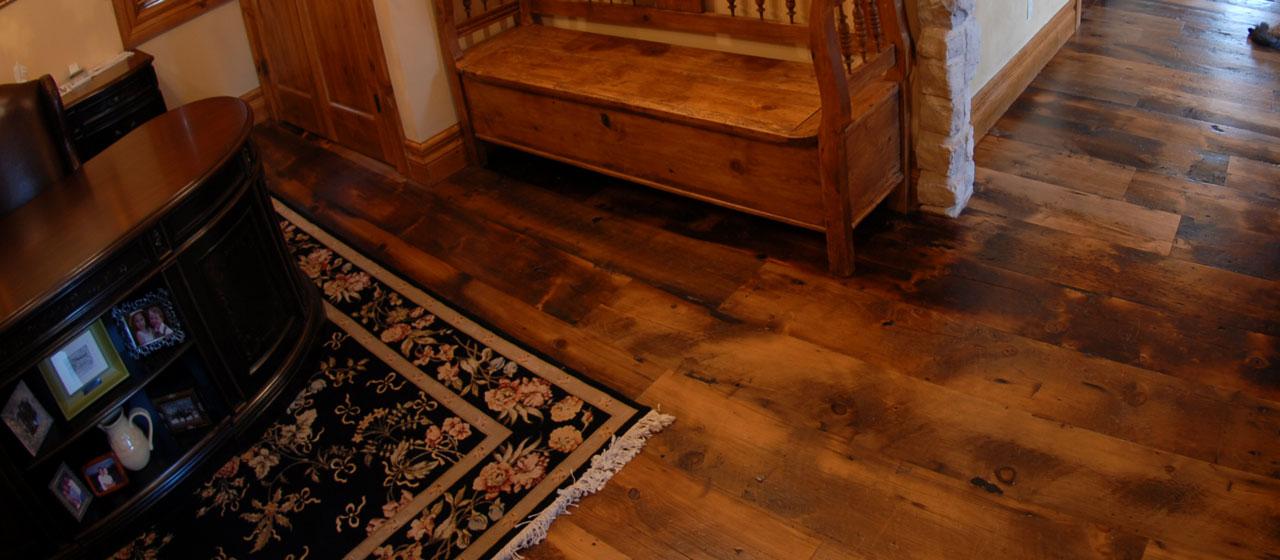Have you ever walked into a home with rustic hardwood floors and felt instantly drawn to its charm? There’s just something about the natural beauty and warmth of hardwood that captures our attention. In this article, we’ll take a closer look at the attraction of rustic hardwood floors and explore why they continue to be a popular choice for homeowners. From their timeless aesthetic to their durability, there’s a lot to love about these stunning floors.
Rustic hardwood floors offer a unique and inviting look that adds character to any space. The variations in wood grain, knots, and imperfections create a sense of authenticity and charm that is hard to replicate with other flooring options. Whether you’re aiming for a farmhouse-inspired look or want to bring a touch of nature into your home, rustic hardwood floors can help you achieve that desired rustic appeal. But it’s not just about the appearance. Hardwood floors are also incredibly durable and can withstand the test of time. With proper care, they can last for decades, making them a wise long-term investment for your home.
If you want to learn more about the different types of rustic hardwood floors available and how to incorporate them into your home, keep reading our article. We’ll provide helpful tips and insights to help you make the best flooring choice for your space. Choosing the right flooring for your home can significantly influence both its appearance and functionality. Your choice will often depend on the specific room in question – the kitchen, living room, basement, balcony, bedroom, or bathroom. Each room has its unique considerations and demands, requiring a distinct approach when choosing flooring.
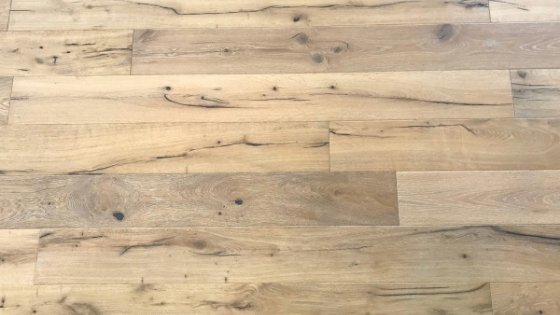
Kitchen
Let’s begin with the kitchen – the heart of many homes and a place that experiences high foot traffic, spills, and various temperatures. Hardwood floors offer a timeless, warm aesthetic that pairs well with many kitchen styles, from rustic to modern. The natural beauty and durability of hardwood make it an attractive choice for homeowners. Oak, maple, and walnut are some popular hardwood options that can withstand the demands of a busy kitchen.
Alternatively, engineered wood can be an excellent alternative in the kitchen, offering a similar look with more resistance to moisture. Engineered wood is made by layering real wood veneer over a plywood or high-density fiberboard (HDF) core, resulting in a stable and durable product that is less prone to warping and scratching. This makes it a great choice for kitchens where spills are common.
If you prefer a more versatile and low-maintenance option, porcelain or ceramic tiles are worth considering. These materials are hard-wearing, easy to clean, and come in a vast array of styles. You can find tiles that mimic the look of wood, stone, or even unique patterns, allowing you to create the perfect kitchen aesthetic.
Recently, luxury vinyl flooring has also gained popularity in kitchens. Vinyl flooring has come a long way in terms of appearance and durability. It is highly resistant to stains, scratches, and water, making it an excellent choice for kitchen flooring. It is also more affordable compared to hardwood or ceramic tiles, making it a practical option for homeowners on a budget.
Living Room
The living room is where you welcome guests and gather with family. Comfort, style, and durability are all important factors here. Again, hardwood floors shine, offering both elegance and longevity. The warm tones and natural grains of hardwood create a cozy and inviting atmosphere in the living area. Oak and walnut are popular choices for living room flooring, as they provide a classic and sophisticated look.
If you’re after a more budget-friendly option, consider laminate flooring. Laminate is made by fusing multiple layers of synthetic materials together, topped with a photographic layer that resembles real wood or other materials. Today’s high-quality laminate options can closely mimic the look and texture of real wood. It is also more resistant to scratches and stains compared to hardwood, making it a suitable choice for high-traffic areas like the living room.
Alternatively, a plush carpet can create a warm, cozy atmosphere in living areas. Carpeting adds a soft touch underfoot and provides insulation, making the room feel warmer. However, it’s essential to consider maintenance requirements and the potential for stains or allergens to accumulate in the fibers. Regular vacuuming and professional cleaning are recommended to keep the carpet looking fresh and hygienic.
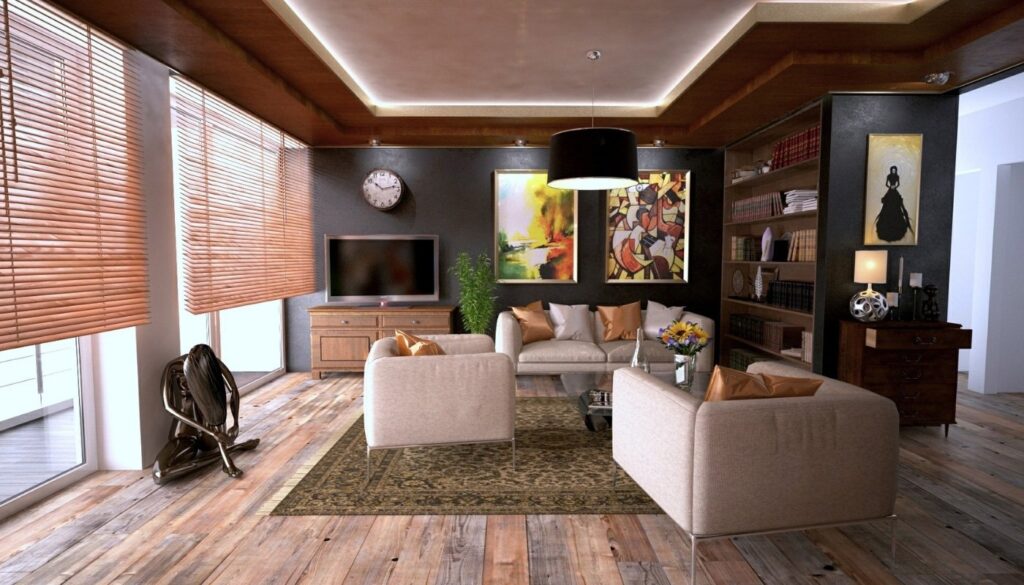
Basement
Moving onto the basement, it’s important to keep in mind that this space often faces issues like moisture and cold temperatures. Therefore, it’s crucial to select flooring that can handle these conditions. Vinyl flooring is a great choice for basements as it is water-resistant, affordable, and available in a variety of designs. Vinyl plank flooring, in particular, can mimic the look of hardwood while offering the durability and water resistance required for the basement.
Similarly, ceramic tiles are a popular choice for basement flooring. They are moisture-resistant and can withstand temperature fluctuations, making them suitable for the basement environment. When choosing ceramic tiles for the basement, opt for those rated for frost resistance to ensure their durability.
If you desire the look of wood in your basement, consider engineered wood flooring with a moisture barrier. The moisture barrier protects the wood from the dampness that can be present in basements, preventing swelling or warping. Engineered wood is also more resistant to moisture compared to solid hardwood, making it a suitable choice for the basement.
:max_bytes(150000):strip_icc()/RusticGradeHardwoodFlooring-5c5deb13c9e77c0001d92b66.jpg)
Balcony
The balcony presents a unique set of challenges, including exposure to the elements. When choosing flooring for your balcony, consider materials that can withstand rain, sunlight, and temperature changes. Outdoor tiles, such as porcelain, slate, or granite, can be excellent choices due to their durability and wide range of styles. These tiles can handle the wear and tear of the outdoors and are resistant to fading from the sun.
Wooden decking is another popular option for balconies, providing a warm, inviting look. Hardwood decking like teak or mahogany is naturally resistant to moisture and decay, making it a suitable choice for outdoor use. However, it requires regular maintenance, including sealing and occasional refinishing, to keep it looking its best.
If your balcony is covered, you might also consider outdoor rugs to add a cozy touch. Outdoor rugs come in various styles and materials that can withstand the elements while providing comfort underfoot. They can be easily cleaned and replaced, allowing you to switch up the look of your balcony.
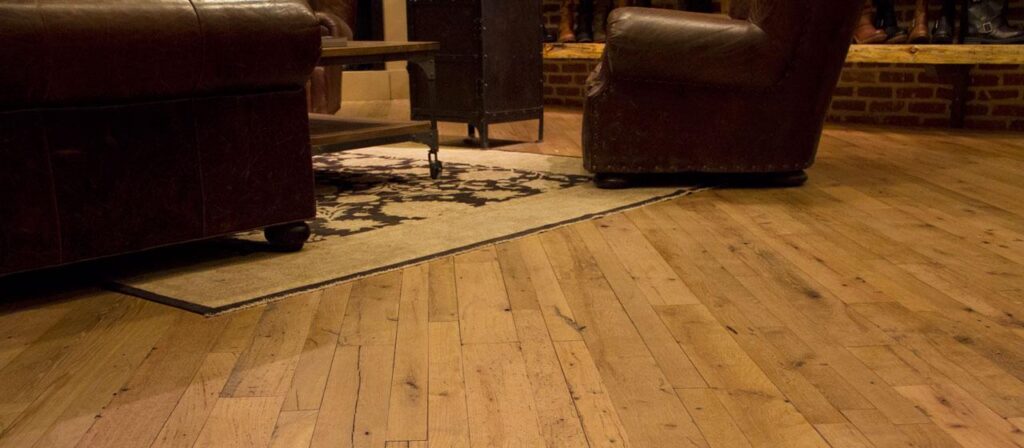
Bedroom
In the bedroom, comfort underfoot is often prioritized. Whether you prefer a soft feel or a hard surface, there are flooring options to suit your needs. Carpeting is a popular choice due to its softness and warmth, providing a cozy feel when you first step out of bed. It also helps absorb sound, reducing noise levels in the room. When choosing carpeting for the bedroom, consider materials that are stain-resistant and easy to clean.
If allergies are a concern, hard-surface flooring like hardwood or laminate can be a better choice. These options are easier to clean and do not trap allergens like dust and pet dander. You can add area rugs to the bedroom to provide comfort underfoot and help reduce noise.
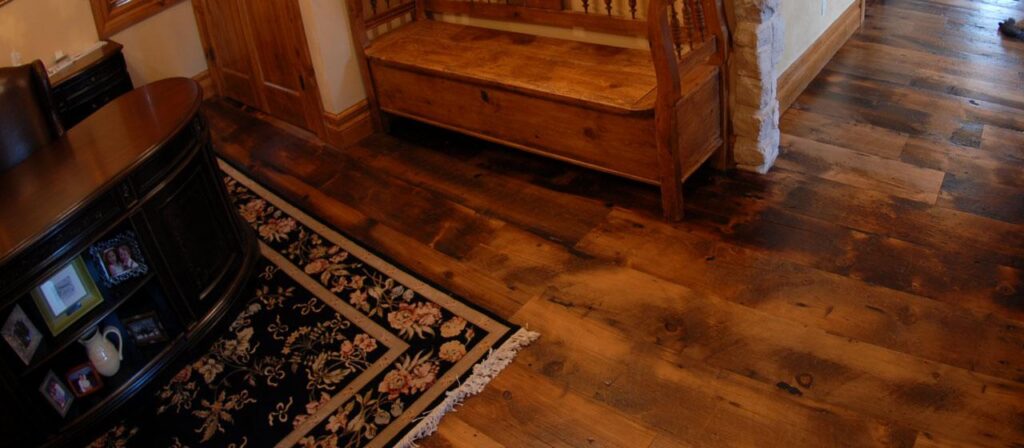
Bathroom
The bathroom is a high-moisture environment that requires water-resistant flooring. It’s essential to choose materials that can withstand exposure to moisture without warping or degrading. Ceramic and porcelain tiles excel in this environment, offering excellent water resistance and a clean, modern look. They are easy to clean and maintain, making them a practical choice for bathrooms.
Natural stone tiles, such as slate or marble, can also work well in bathrooms. They add a touch of luxury to the space and are known for their durability. However, natural stone requires more maintenance compared to ceramic or porcelain tiles. Regular sealing is necessary to protect the tiles and prevent water absorption.
If you want a warmer, softer feel underfoot in the bathroom, consider luxury vinyl tiles or even cork flooring. Luxury vinyl tiles (LVT) are highly water-resistant and can mimic the look of natural materials like wood or stone. They are also more comfortable underfoot compared to ceramic or porcelain tiles.
Conclusion
Choosing the right flooring for each room in your home is essential to create a cohesive and functional space. In the kitchen, hardwood floors, engineered wood, porcelain or ceramic tiles, and luxury vinyl flooring are all excellent options. The living room can benefit from hardwood floors, laminate flooring, or plush carpeting. The basement is best suited for vinyl flooring, ceramic tiles, or engineered wood flooring. For the balcony, outdoor tiles, wooden decking, and outdoor rugs are attractive choices. In the bedroom, carpeting, hardwood, or laminate flooring can provide comfort. Finally, in the bathroom, ceramic and porcelain tiles, natural stone tiles, or luxury vinyl tiles and cork flooring are water-resistant options. By considering the unique requirements of each room, you can select the perfect flooring that combines both style and functionality for your home.
